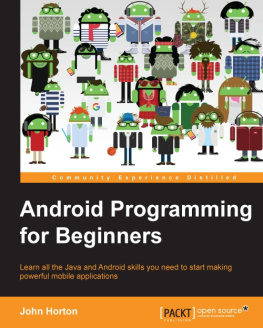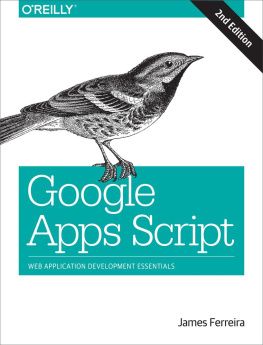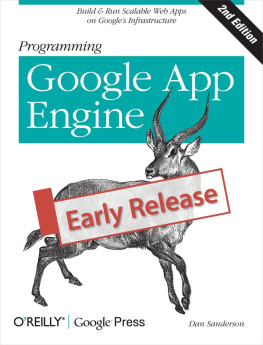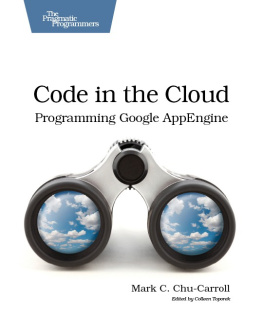Programming Google Glass, Second Edition
Build Great Glassware Apps with the Mirror API and GDK
by Eric Redmond
Version: P1.0 (February 13, 2015)
Copyright 2015 The Pragmatic Programmers, LLC. This book is licensed to the individual who purchased it. We don't copy-protect it because that would limit your ability to use it for your own purposes. Please don't break this trustyou can use this across all of your devices but please do not share this copy with other members of your team, with friends, or via file sharing services. Thanks.
Dave & Andy.
Many of the designations used by manufacturers and sellers to distinguish their products are claimed as trademarks. Where those designations appear in this book, and The Pragmatic Programmers, LLC was aware of a trademark claim, the designations have been printed in initial capital letters or in all capitals. The Pragmatic Starter Kit, The Pragmatic Programmer, Pragmatic Programming, Pragmatic Bookshelf and the linking g device are trademarks of The Pragmatic Programmers, LLC.
Every precaution was taken in the preparation of this book. However, the publisher assumes no responsibility for errors or omissions, or for damages that may result from the use of information (including program listings) contained herein.
Our Pragmatic courses, workshops, and other products can help you and your team create better software and have more fun. For more information, as well as the latest Pragmatic titles, please visit us at http://pragprog.com.
For the Best Reading Experience...
We strongly recommend that you read this book with the publisher defaults setting enabled for your reading device or application. Certain formats and characters may not display correctly without this setting. Please refer to the instructions for your reader on how to enable the publisher defaults setting.
Table of Contents
Copyright 2015, The Pragmatic Bookshelf.
Changes in the Beta Releases
P1.0, Feb 13, 2015
Replaced all ADT examples in Part Two with Android Studio.
Due to Googles recent announcement that the Glass Explorer program has ended, thus suspending any further purchase of Google Glass, we are following suit and suspending production of our book, Programming Google Glass. Thanks to everyone who took the leap of faith with us and reviewed or purchased the beta.
Beta 3, Dec 15
Beta 2, November 13
Beta 1, October 21
Copyright 2015, The Pragmatic Bookshelf.
Preface
Google Glass is the new wearable computer that everyone is talking about. Some people love it, some hate it, but folks cant seem to help but talk about it. In short, Glass is a head-mounted computer with an optical display, a camera, several sensors, and a voice or touch interface. You can walk around, hands-free, check your email, watch or take videos, play games, and most anything else you can do with a smartphone. Equally important, its gaining traction for enterprise purposes, from fast-food restaurant employee training to use in surgical settings.
You can program Glassware (Glass applications) in two ways: by using the HTTP-based Mirror API web-service, or by creating native applications using the Glass Development Kit (GDK). This book covers how to program both.
Youll get a glimpse of what Glass is and what it is not, and how users can interface with Glass. In Part One of this book youll learn how to develop a Glass application fast, by using the Mirror API to manipulate timeline cards and menus, track a Glasss geolocation, create rich interactions by responding to user inputs, and capture or serve user images and videos. In Part Two youll learn how to shape user experience with the GDK by interacting with Glass hardware, from voice-to-text inputs, to QR code reading with the live camera, to building your own video game with fine-grained sensor inputs. Youll see how to properly design new Glassware or update existing applications to become Glassware. This is the book to read if you want a shortcut to this brave new world.
Whats the Big Deal with Glass?
Imagine a world where computers did not exist, but the abilities that computers provided did. Rather than pulling a phone out of your pocket to talk with someone, youd simply speak their name and youd be connected. Or instead of taking out a laptop to play a video game, you would merely ask to play a game and it would appear. Or rather than sitting in front of a television screen to watch your favorite movies, a panel would hover conveniently in the air visible only to you, or sharable with friends who wish to watch as well. The idea of Google Glass is not to add more technology to your daily life, but rather sit idly in the background, available when you need it. Its about getting technology out of your way, while still providing its benefits.
The first future-facing movie that I can recall containing consumer HUD (heads-up display) goggles was Back to the Future 2 . This HUD was worn in the future year 2015 (I know, right?), not by a military commander or an airship pilot, but by young Marty McFly, Jr., as he sat with his family around the kitchen table. This was a consumer device capable of, at least, displaying text and accepting phone calls.
Although Glass is sometimes considered to be an augmented-reality device, its better thought of as an ever-present optical interface for a mobile device. Its a self-contained computer, yes, but it is also most useful when paired with an external paired smartphone for some actions, such as geolocation or continuous Internet access. Glass is sometimes refered to as having the power of a smartphone available, without the inconvenience of digging in your pocket.
Is This Book for You?
This book is designed to help experienced developers quickly start writing Google Glass applications with the Mirror API. Although this book covers using the interface with Googles Java Mirror Client code, the Mirror API itself is an HTTP interface with support for many languages. This means that many of the lessons about the Mirror API itself can apply to languages beyond the simple Java client.
The pertinent code is covered in the book, and the rest can be downloaded along with the book (or from GitHub.)
You neednt be a Java expert to follow Part One of this book, but it can help to know your way around the syntax and Eclipse editor. You may also get more out of Part One if youre familiar with Google App Engine, although you can use any Platform as a Service (PaaS) or host your own Glassware applications. Part Two requires a much more in depth knowledge of Java, and there well be using The Intellij-based Android Studio.
Whats in This Book?
This book is intended to be read sequentially, from the first to last chapter. It covers most of the Mirror API and the GDK, but its not designed to be a reference book. There are plenty of online documents for more detailed reference material.
Part One
After an introduction to Glass and two styles of programming Glassware in Chapter 1, , we will dive into the Mirror API web service. In Part One we work on slowly building up a complete Glassware, along the way using most of the components of the Mirror API. Although Id recommend you read both the Mirror API and GDK parts to get a full appreciation of your Glassware options, you are free to skip straight to Part Two if you have no interest in the Mirror API service.

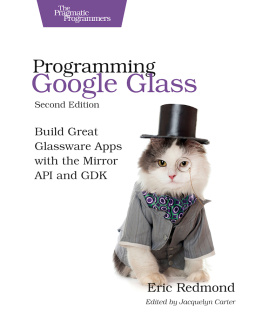
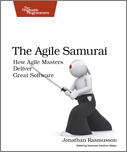

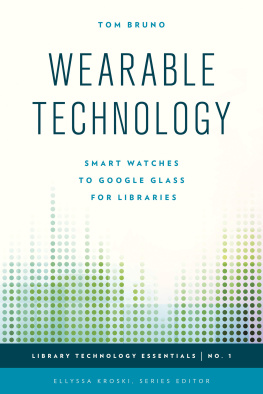
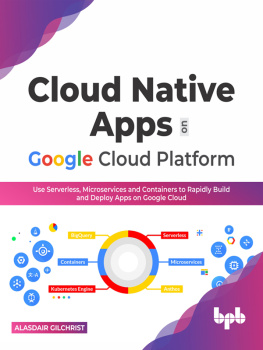
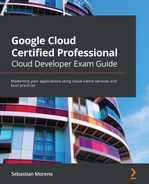
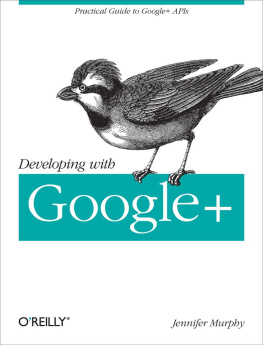
![Firstenberg Allen - Designing and developing for Google Glass: [thinking differently for a new platform]](/uploads/posts/book/193871/thumbs/firstenberg-allen-designing-and-developing-for.jpg)
![Cohen Marc - Google compute engine: [managing secure and scalable cloud computing]](/uploads/posts/book/193829/thumbs/cohen-marc-google-compute-engine-managing.jpg)
